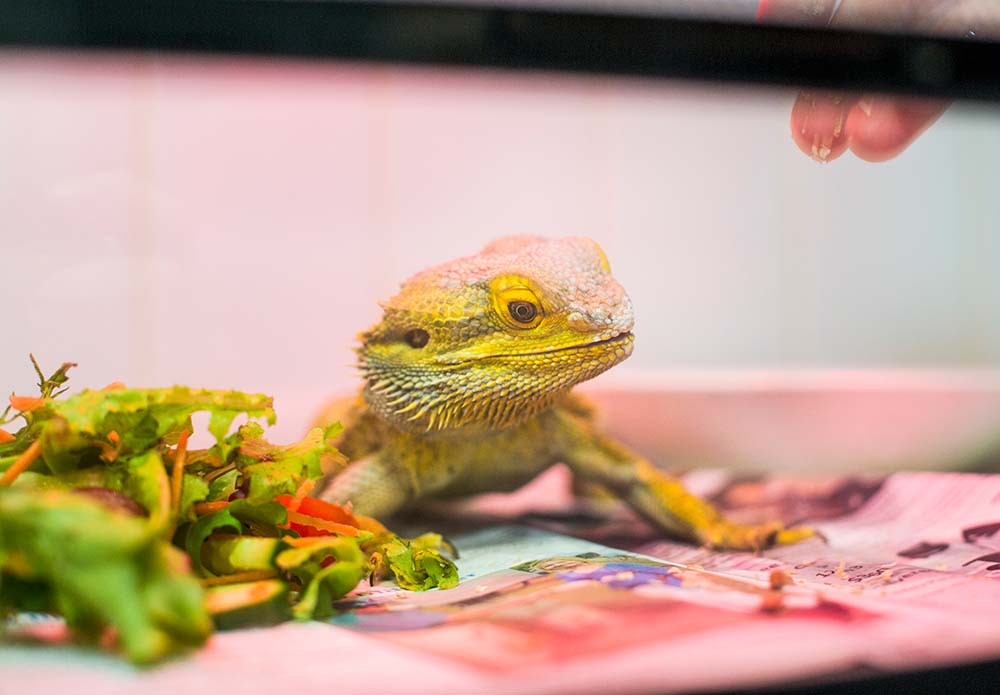Create an optimal environment
Building an enclosure
Provide enough space for your bearded dragon to stretch lengthwise and turn without touching the sides of its enclosure.
Bearded dragons require more floor area than height. Two to three fully grown lizards can live comfortably in a space that is 120cm long x 90cm wide x 50cm high.
Build the enclosure from materials that are impervious to liquids and can be easily cleaned, such as glass or Perspex.
Your bearded dragon will need somewhere to hide. Place rocks, logs, boxes or branches in the enclosure for enrichment purposes. Ensure they are secure and won’t cause harm through movement or ingestion.
Clean and disinfect all objects, including food and water bowls, daily.
Choosing a substrate
Avoid substrates such as walnut shells, wood shavings and ground corncob substrates to remove risk of gut impaction following ingestion. Instead, use newspaper, pelleted recycled paper, fine sand or gravel.
Control the temperature, humidity and lighting
Temperature
Lizards are ectothermic, meaning they use external heat sources and their behaviour to regulate their body temperature. Their preferred body temperature is 34°C to 35°C. Ensure your enclosure is large enough to allow for temperature variation – aim for a temperature gradient of 26°C to 31°C at the cool end and 35°C to 40°C at the warm end.
Basking sites should approach 40°C. Provide two heating forms – one that determines the background ambient temperature, and a basking light. Ambient room temperature should be stable; it’s a common mistake to keep vivariums in rooms subject to temperature extremes.
Protect all heating devices to avoid direct contact and skin burns and avoid heat rocks.
Humidity
Bearded dragons prefer a humidity of 30 per cent to 40 per cent. Inappropriately high humidity can lead to dermatitis and blister disease, while low humidity may cause dysecdysis (abnormal shedding of the skin).
Control the humidity of your vivarium by changing the size of the water bowl, which you should place at the cooler end.
Lighting
All lizards need a cycle of light and dark. A 12-hour:12-hour cycle is optimal, and the temperature should cycle with the lighting cycle.
Bearded dragons require UVA and UVB for calcium absorption and nutrient digestion. UVA and UVB are both provided by unfiltered natural sunlight. Alternatively, provide UVA and UVB with mercury vapours or unshielded 12-volt dichroic lamps. Ensure UV sources are not greater than 30 centimetres above your dragon.

